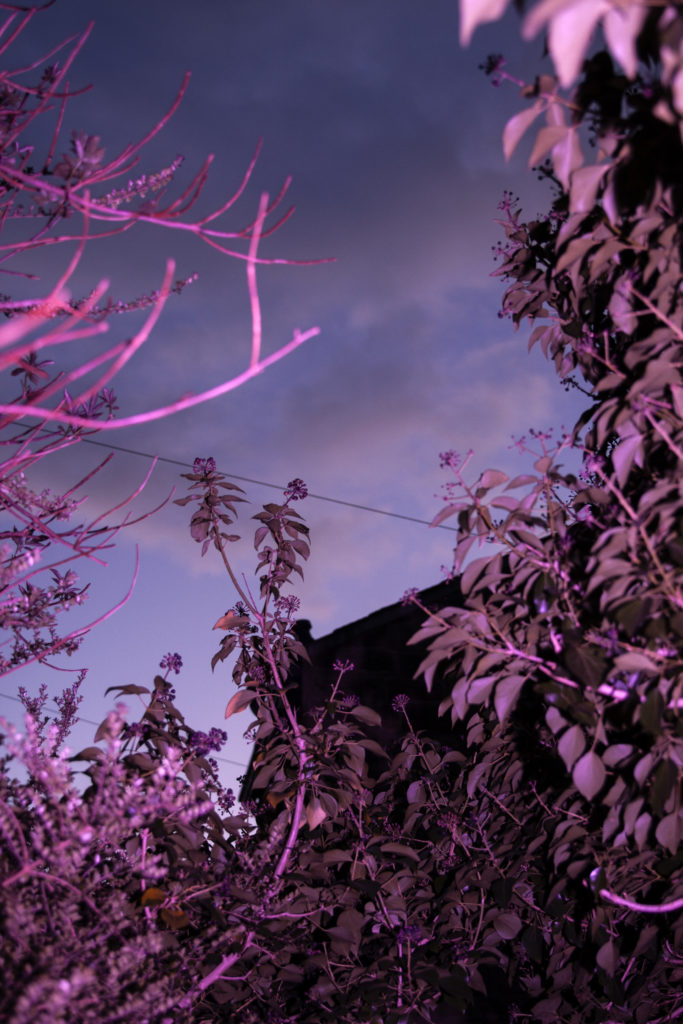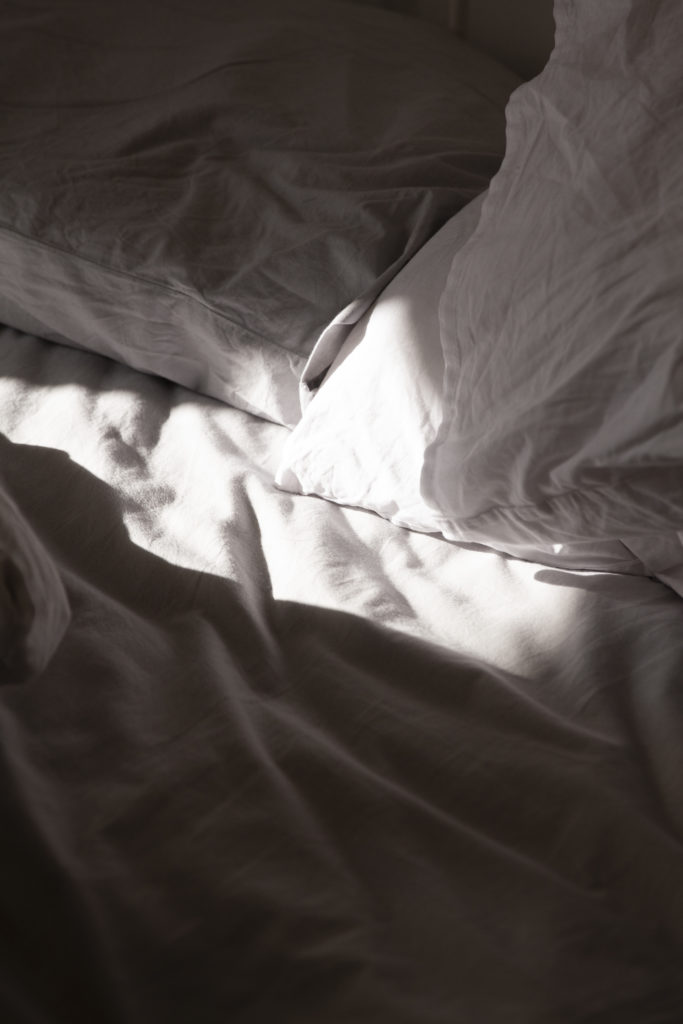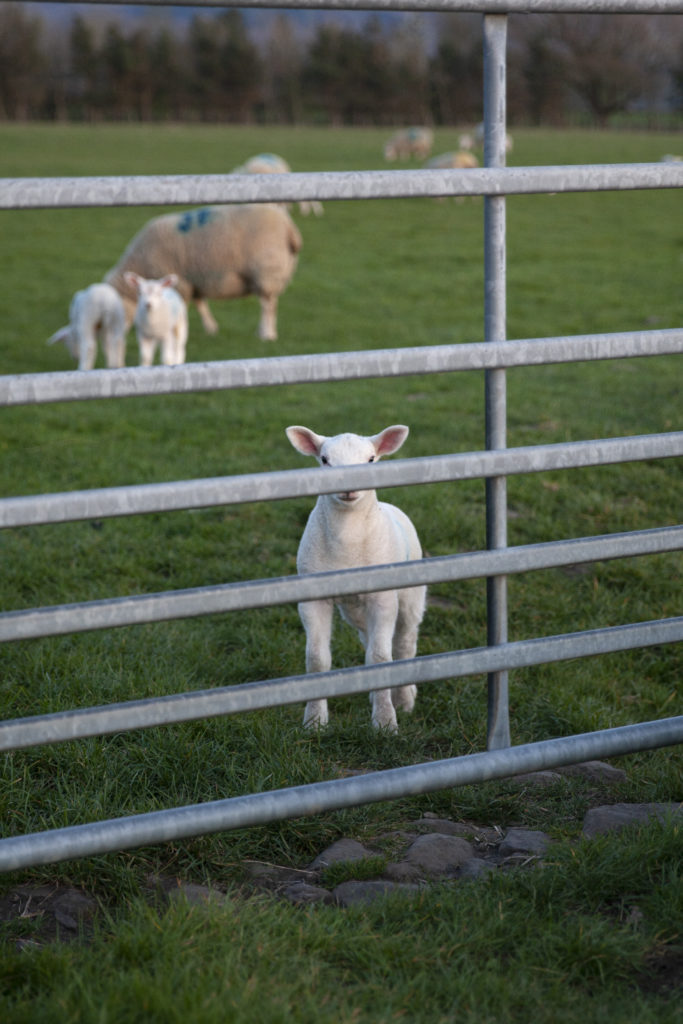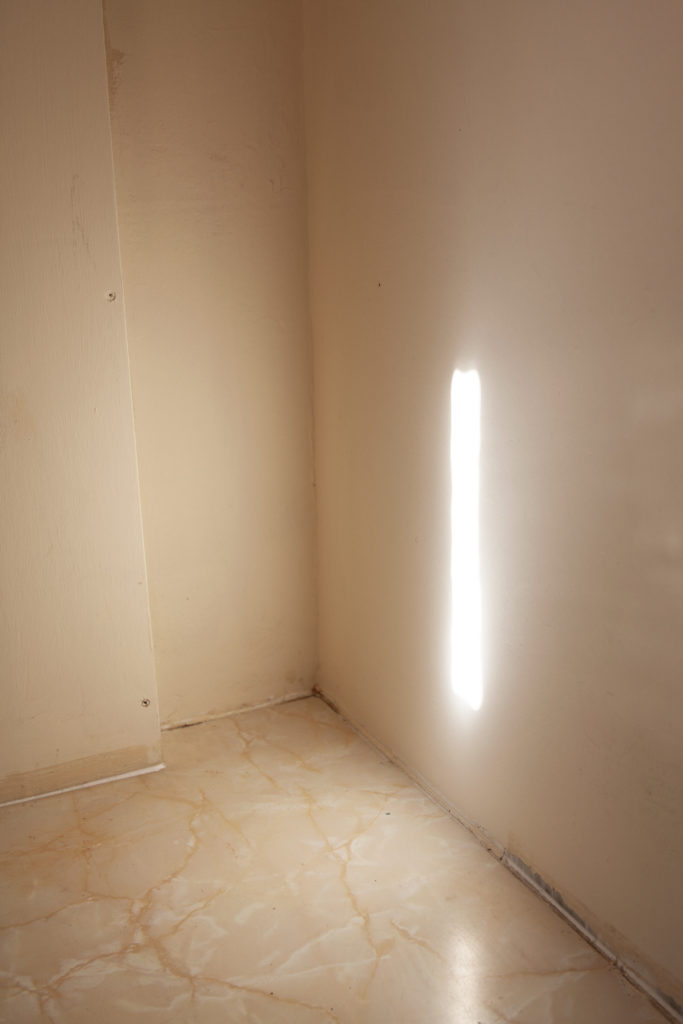Lockdown with Verity Adriana
This article contains image descriptions in the captions to help those with visual impairments.
Utilising this unique time, Verity Adriana is using photography and her fascination with light to explore her surroundings and create routine
Verity Adriana is a photographer and educator based in Leeds, UK, and lecturing at Leeds Trinity University. Her practice is explorative of light, and phenomenological concepts - as documented in her recent project Lumen, created alongside the river Humber.
Like many photographers and creatives around the world, she is finding ways to stay creative and capture her surroundings during the Covid-19 pandemic and using creative outlets as a source of comfort and routine in these difficult and uncharted times. Rethinking notions of home, taking advantage of the marvels of technology and the repetition of shooting has helped ease the overwhelming collective situation we face. Allowing for a unique opportunity and space to explore her new home in the Leeds countryside, with photography helping “to familiarise aspects of my ‘home’ in my mind.”
So what does ‘home’ mean to Verity, and how is the lockdown shifting her approach to photography? I spoke to her to find out more on how her gaze has shifted from cumulative to responsive, exploring her immediate boundaries with light, and utilising Instagram to present her explorations and explore our exposure to repetition amid the pandemic.

A running theme and focus in your practice is light. Your work in the home also demonstrates this. How different is your approach to looking at light in your everyday - and currently constant - surroundings?
Despite me saying life hasn’t changed drastically for me personally, I am of course aware of the bigger picture and the crisis unfolding, and I got really sucked into watching the government briefings every day and tracking what was happening by obsessively watching a range of news channels. I was hit with a huge wave of panic about three weeks into lockdown and felt incredibly claustrophobic living somewhere relatively unknown to me, quite far from home, so I made every effort to go for my daily walk and photograph the visual feeling of claustrophobia which has developed into a daily routine of making images.
I have had a long running fascination with light after a strange experience visiting Galilee some years ago, where during a sunset over the ancient lake it felt as though my mind was transcended somewhere else. I spent a long time afterwards trying to understand what had happened to me in that instant by researching into sublime theory and our connections to a sense of otherness, which we cannot explain, a gap in our understanding. I approach photography from a similarly phenomenological stance and whilst I love film photography, I work digitally and am fascinated by the process of the camera encoding light to create images which we then view via the light on our screens. I played around with ideas about conveying our existential connections through light interacting with screen-like surfaces in Lumen where these screens took on the light qualities in the scene, playing with the idea of what a photograph is and requiring the conscious act of looking at the materiality of light.
The work I am currently making is based around the internal and the external, the micro and the macro and how instances of light remind us of our existence within that connected space. Because of the repetitive nature of time at present, I am working with the format of Instagram to present the work in a way that conveys that idea; if you see repeated images of trees, windows or light then that is the intention. I take a kind of Heideggerian approach towards the camera as a technology that allows for the process of revealing and concealing, which it does via light and so I experiment with exposure, in-camera techniques and artificial flashlight. Just as the camera converts photons to electronic signals and then into a digital pixel display, the sun's energy is mined via the technologic, making the electricity which powers our machines. The camera is a technology born out of long-established human thinking about light and dark and our terrestrial connection to the celestial – something Dr Junko Theresa Mikuraya discusses in History of Light: The idea of Photography. This cycle of light, technology and universal existence creates the magic I find in the photographic and is what fascinates me with the medium.

In many ways the home is an extension of the self. In reference to your recent work, how personal do you feel the images are? Especially in contrast to your other works which seem to present a collective identity of a place or city.
That is an interesting question because I have only ever felt a real sense of home once in my life. I moved around a lot throughout my childhood, including abroad, and then moved out on my own at the age of fourteen. After that I moved several times within Hull itself and settled in my flat where I made Lumen. I fell in love with the flat and it is the longest I have lived anywhere, it felt natural to live there – the space and I seemed to fit together. I eventually had to leave the city to pursue my career and have since been moving around the country so have not felt at home again yet as I have been attempting to discover the places I have moved to, amidst fitting into new workplaces, job roles and towns.
I made Legacy in the year that I left Hull which provided an opportunity to look back at a city I have had an interesting relationship with, and I created a body of work that used light, smoke and mirrors to portray the idea of the spectacle of the year of Culture in the city’s cultural spaces. I also made a body of work in Venice called Sublime Intervention in response to a fellowship with the British Council at Venice Biennale in August 2019. I spent the summer there researching the connection to God, in whatever form that manifests, through the light in religious artworks, architecture and the layout of the city itself. The series of images and accompanying book were due to be shown at The Cass in London with the British Council which has now been postponed indefinitely.
This lockdown is giving those who are able the time to think and reflect on life, and for me this has meant exploring this place I live in at the moment. I am experimenting with viewpoint, constriction, planes of focus and depth as well as the ordinary and extraordinary in the everyday by looking at how light interacts within the boundaries of this space. The images are providing me with a creative routine, but they also help to familiarise aspects of my ‘home’ in my mind. The more I look, photograph, edit and show them online the more this place is becoming familiar and known to me, and less like the flat I am currently living in. This means the work is responsive rather than the culmination of a process of experimentation and research, and I am interested to see where it will go as it unfolds.

How easy was it for you to get motivated and creatively look at your home, especially in such a strange time when it is easy to feel confined and restricted within the home?
I initially felt quite overwhelmed by the online response to the crisis, it seemed as if there was so much going on; call outs, changes, posts and as fantastic as this community response was, it was almost overwhelming - my mind couldn’t make sense of it. I spent time offline walking, thinking and taking in the places that I could go and then slowly tuned back in. Everything seems heightened when you are restricted, and my eye begins immediately taking in my surroundings with more attention – something I have heard a lot of people say since the lockdown. Redeye recently held an interesting discussion with the philosopher Katrin Joost who discussed our collective shifting of priorities on a global scale through our perception of time, our horizons, the limitation and shrinking of our world but our interconnectedness through technology. I think that these are all ideas I am trying to express in my current imagery. As problematic a platform as it can be in some ways, Instagram has really helped me to keep my eye making everyday images over the years, in times where I haven’t felt the mental capacity to undertake big research projects like Lumen and Legacy. It helped me to form a habit which I think has played into how I am making this current work. Having to work within the restricted space available to me has really forced me to look more deeply at the everyday within the smaller scale domestic, as well as the universal ideas within the infinite of the celestial, so there is a deliberate mixture of images of the moon, my washing line, the weeds in the garden, sunsets and so on.

In The Social Photo, Nathan Jurgensen discusses the reaction to train travel in the early years of its development and how people were concerned that our experience of the landscape would become flattened to a blur – easily seen and consumed but not travelled within. He then argues that modern life is currently experienced more than ever through camera screens – something even more prevalent as we navigate through the pandemic. I think modern life itself has become the train, our experience is caught up with rush, pressure, busyness and this crisis forces us to experience it in a slower, perhaps more considered way. As it evolves, technology is sometimes derided, however the digital and the online offer ways for us to connect that we have a renewed gratitude for. A really interesting development has been the Mass Isolation projects run by places like Format and Impressions Gallery (amongst others) that offer a curated collection of a wider, interconnected, global body of work, that is documenting and reflecting back to us our current experience of life under the crisis, and my work sits within this. It has offered an interesting perspective but has also opened up the practice of many other artists to me and I am enjoying discovering new work.
From your perspective as an educator and practicing photographer, what are your predictions on how the face of photography will be permanently changed due to Covid-19?
Things are so uncertain now it feels difficult to predict what might happen, but I have made some observations of the shift in Photography within the last few weeks. There have been more online events from some of the bigger institutions which has made access much easier. I have ‘gone’ to several of these online talks in the space of a week and I have many more in the diary. I have also visited virtual exhibitions thanks to places like V21Artspace. This industry is a difficult scene to break into and I think the crisis has exposed some of the structure and fragility of it. I can only hope that if we move to a more online and accessible forum in the interim then when we come out of the crisis there will be enough of a significant shift in thinking to be more open and accessible to all.
I think that technology will now play a huge role in how we make and show work. People are reliant on the resources they have at home and I am a strong believer in the idea that so long as you master the technology you are using, and the machine becomes the working of your eye and your consciousness then it doesn’t matter what tools you are using. I regularly use my smartphone as well as my dslr and like experimenting with what these machines can do. We will now be more reliant than ever on working with online practices as we share our experiences within the fast-evolving networked circulation of images that has become one of our major modes of communication. There is opportunity to make and show work within this digital stream to a widely connected audience that will be a documentation of the time we are living through. Evan Roth works with these ideas, his projects Red Lines and Since You Were Born which are some of the highlights of recent shows I saw before lockdown. What emerges after the pandemic will be interesting, will new movements form, what kind of work will be made in reaction to freedom and will there be a resistance to return to our old ways? It feels way too early to call right now, I think most people are adapting to the new now and working our way through it.
On a personal level I have had work cancelled, and the solo show that I have been planning for two years that I was aiming to use as a springboard for my practice, has also been cancelled and the gallery is closed - a major setback for me professionally and stressful for the staff. With so much uncertainty and pain out there I consider myself lucky to have the lecturing hours I’ve got, and my daily thoughts are with everyone affected by this situation.

How do you think this time inside and socially distanced, having to get creative with alternative ways of carrying out photographic practice, teaching and communicating will impact your work when life resembles normality again?
This slower pace of life has enabled me to reconnect more deeply with photographic practice, looking and thinking and revisiting practitioners' work as well as discovering many new talented artists. I have other projects I want to start in the home, one involving the materiality of plastic, with a focus on what we throw away. I have longer term ideas about reconnecting with some of the places I grew up, particularly in the Middle East. A kind of rediscovery if you will. These questions have been great at really asking me to reflect on my practice and I think as much as my work with light and photography has been about spiritual connections, I am beginning to see that in some ways it is my way of figuring out my place in the world.
I will be interested to see if the alternate working practices will become more interweaved with traditional ways of working and if this will allow for a less pressured work life. Connecting online could never replace physical human contact but it could in some instances replace some of the high pressure systems of working we have constructed for ourselves, so I will be curious to see if technology can help us continue with the slower life that simultaneously benefits our planet.
I am hopeful that cancelled shows will be put back on, not just mine but for anyone affected by this situation. We will be needing to reconnect with each other with a renewed set of priorities.
You can see more of Verity’s lockdown images on Instagram @verityadrianaAll projects and written research are available at www.verityadriana.com
Interview by Sophie Turrell
Want to feature on Darwin Magazine? Submit your work to submit@darwinmagazine.co.uk
Join our community and stay tuned for updates and opportunities here - www.instagram.com/darwinmagazine/